The most underpaid players we’ve seen in the NBA
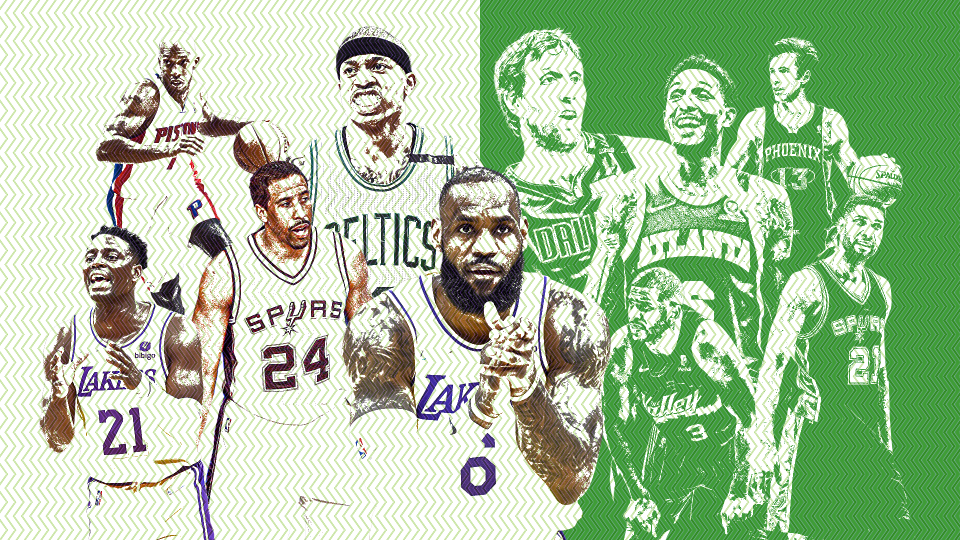
Last year, we started using a metric called Real Value (developed by our own Alberto De Roa) to estimate how much each player should be paid based strictly on on-court impact. You can learn more about it here.
Since we have all the player salaries data dating back to 1990, we decided to put that info and the Real Value metric to use for a fun exercise: finding out which players have been the most underpaid in the NBA.
Do note that Real Value totally disregards maximum and minimum salary limitations, instead allocating earnings just based on performance on the court. The only constraint is that salaries are distributed taking into account how much NBA teams spent on player contracts each season.
With that, the main takeaway from our research is that, though extremely well compensated, superstars are actually underpaid relative to what they bring to the table. That’s especially true for stars who come out firing from the very start. If you got a young Luka Doncic, that’s the best bargain imaginable right there.
This is not hyperbole: Doncic making $7.6 million in 2019-20 while putting up an All-NBA 1st Team season actually qualifies as the biggest bargain in league history, per our Real Value metric. (He should have made $38.2 million – a mere $30.6 million gap).
Before going ahead with our all-time ranking, a caveat: if you missed games because of injury or any other matter, your Real Value will take a big hit. If you missed all games in a season, your Real Value for that year is $0.
This ranking is based on the difference in dollars between Real Value and career earnings. With way more money available to spread around in the NBA than before, you will see a lot of modern-day players on the list. Eventually, we will make more based on percentages and adjusting to inflation.
Without further ado, here’s our ranking for the most underpaid players on record.
LeBron James

Daniel Dunn-USA TODAY Sports
Seasons overpaid vs. underpaid: 3-16
Real Value: $629,352,546
Career earnings: $390,511,090
Difference: $238,841,456 (61.16 percent)
The fact that he’s the highest-paid NBA player ever and also the most underpaid, per our research, may tell you something about the quality of his play for the last two decades.
Per Real Value, James owns the second-most underpaid season ever (to go with the sixth and the ninth), which came back in 2008-09. That year, James averaged 28.4 points, 7.6 rebounds, 7.2 assists, 1.7 steals and 1.1 blocks while leading the Cleveland Cavaliers to a 66-16 regular season and to the Eastern Conference Finals. James was named league MVP that season, as well as being named an All-Star and 1st Team All-NBAer.
That year, Cleveland paid James $14.4 million, a lowly figure compared to the $44.4 million Real Value valued James and a $30.0 million disparity in Real Value vs. actual value.
Giannis Antetokounmpo

Michael McLoone-USA TODAY Sports
Seasons overpaid vs. underpaid: 0-9
Real Value: $247,205,078
Career earnings: $147,960,040
Difference: $99,245,038 (67.08 percent)
Although the Milwaukee Bucks are giving Giannis Antetokounmpo as much money as they can by the rules, it still falls a good bit short of what they are getting in return – that is, some of the best basketball campaigns ever put together by a player, including multiple league MVPs, a Finals MVP, Defensive Player of the Year, and much more.
Each of his years in the NBA, he should have made more, with the biggest example of that being in 2016-17, when Antetokounmpo averaged 22.9 points, 8.8 rebounds 5.4 assists, 1.6 steals and 1.9 blocks on 52.1 percent shooting.
That year, Antetokounmpo made $3.0 million on the final year of his rookie-scale deal on his way to being named an All-Star and 2nd Team All-NBA. Real Value has Antetokounmpo’s worth that season slotted in at $27.3 million for a $24.3 million difference.
Even in Antetokounmpo’s historic 2019-20 season, his MVP, Defensive Player of the Year campaign, he was underpaid, per our metric, despite making $25.9 million that season. According to Real Value, Antetokounmpo was worth $44.5 million that year for an $18.5 million difference.
Luka Doncic

Kevin Jairaj-USA TODAY Sports
Seasons overpaid vs. underpaid: 0-4
Real Value: $127,771,452
Career earnings: $32,476,151
Difference: $95,295,301 (293.43 percent)
According to Real Value, Doncic has yet to be fairly compensated for his output as an NBA player, and that’s because he’s basically performed at a superstar level since his second season and pretty much at an All-Star level since his rookie year, despite not receiving the distinction that season.
Doncic owns the most underpaid season in our database (as well as the fourth) for his masterful 2019-20 campaign, his second NBA season where he put up 28.8 points, 9.4 rebounds and 8.8 assists while earning $8.1 million from the Dallas Mavericks.
And still, the Mavericks went 43-32 that season and were bounced in the first round of the playoffs, a poor job by the franchise in maximizing their roster around the biggest bargain contract Real Value has ever seen.
James Harden
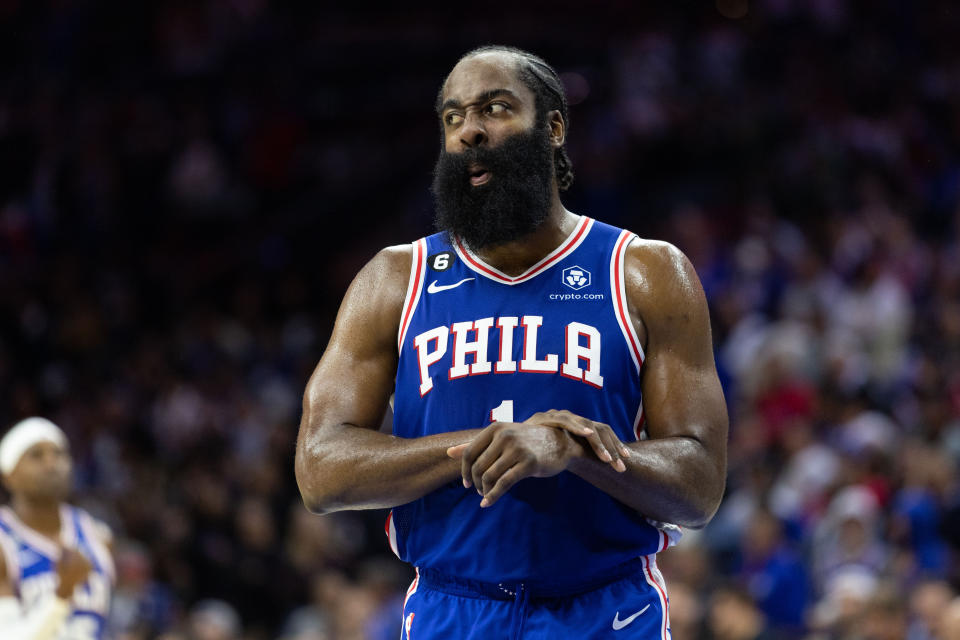
Bill Streicher-USA TODAY Sports
Seasons overpaid vs. underpaid: 2-11
Real Value: $362,175,818
Career earnings: $272,039,833
Difference: $90,135,985 (33.13 percent)
Much has been made about his pay cut with the Philadelphia 76ers, but James Harden has actually been underpaid for years before that, with the biggest examples of that coming in the not-too-distant past.
Harden’s three most underpaid seasons actually came as a member of the Houston Rockets and not while he was on his rookie-scale deal as a member of the Oklahoma City Thunder.
His most underpaid, according to Real Value, was in 2018-19 when he was making $30.6 million. Imagine being so good that you can earn that much money for a season and still comfortably outperform your earnings.
That year, Harden didn’t win MVP despite leading the league in scoring at 36.1 points per game, the seventh-highest scoring season the NBA has ever seen behind just Wilt Chamberlain and Michael Jordan, to go with 6.6 rebounds, 7.5 assists and 2.0 steals on 44.2 percent shooting from the floor.
Antetokounmpo was the fair recipient of MVP that year but goodness, it’s easy to see why Harden felt slighted that he didn’t get back-to-back MVPs after that magnificence in 2018-19.
According to Real Value, Harden was worth $47.6 million that year for a $17.1 million disparity.
Dwyane Wade
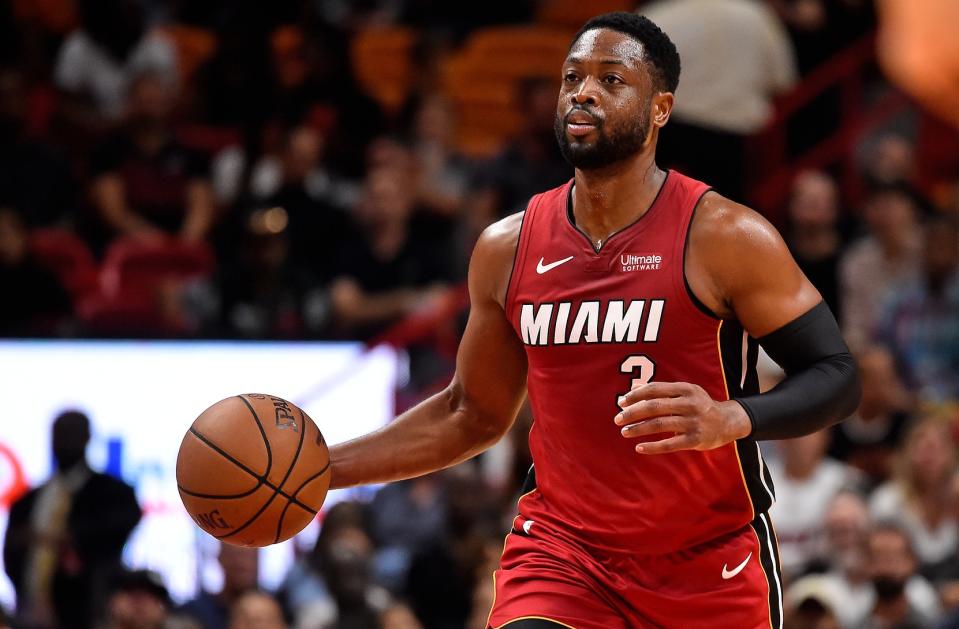
Jasen Vinlove-USA TODAY Sports
Seasons overpaid vs. underpaid: 6-10
Real Value: $287,225,122
Career earnings: $199,499,205
Difference: $87,725,917 (43.97 percent)
Dwyane Wade took a discount with the Heat during the Big Three era, in the midst of his prime, so the team could sign James and Chris Bosh, as well as the role players needed to compete for championships.
But it was far before that that Wade was truly underpaid, with the biggest example of that being in his legendary 2005-06 season when the Hall-of-Fame 2-guard led Miami to a championship, won Finals MVP, was named an All-Star and made 2nd Team All-NBA… all while earning $3.0 million. (Although it’s hard to fault the Heat for that one example since Wade was still on his rookie-scale contract that year.)
According to Real Value, Wade’s 2005-06 output was actually worth $27.0 million, a disparity of $24.0 million.
Nikola Jokic

Ron Chenoy-USA TODAY Sports
Seasons overpaid vs. underpaid: 0-7
Real Value: $196,762,497
Career earnings: $117,688,678
Difference: $79,073,819 (67.19 percent)
As you have already seen and will continue to see on this list, players under rookie-scale contracts are one of the biggest bargains in all of sports, value-wise.
Well, Jokic didn’t even get that deal as a second-round pick, making a grand total of $4.1 million over his first three seasons. However, his status as a second-rounder meant that Jokic was able to hit free agency and negotiate a new contract sooner than a lot of other young stars in the NBA. By his fourth season, Jokic was making a far fairer (though still undervalued) $24.6 million.
Jokic isn’t ranked even higher on this list because of that fact, as well as because he didn’t fully explode until his fourth season, the first All-Star campaign of his career when he also made 1st Team All-NBA, when he was already making $24.6 million.
Still, Jokic was underpaid that season, per Real Value, though not as underpaid as in 2017-18, when he made $1.5 million while putting up 18.5 points, 10.7 rebounds and 6.1 assists nightly. Real Value valued Jokic’s 2017-18 at $22.6 million for a $21.1 million difference.
Kevin Durant
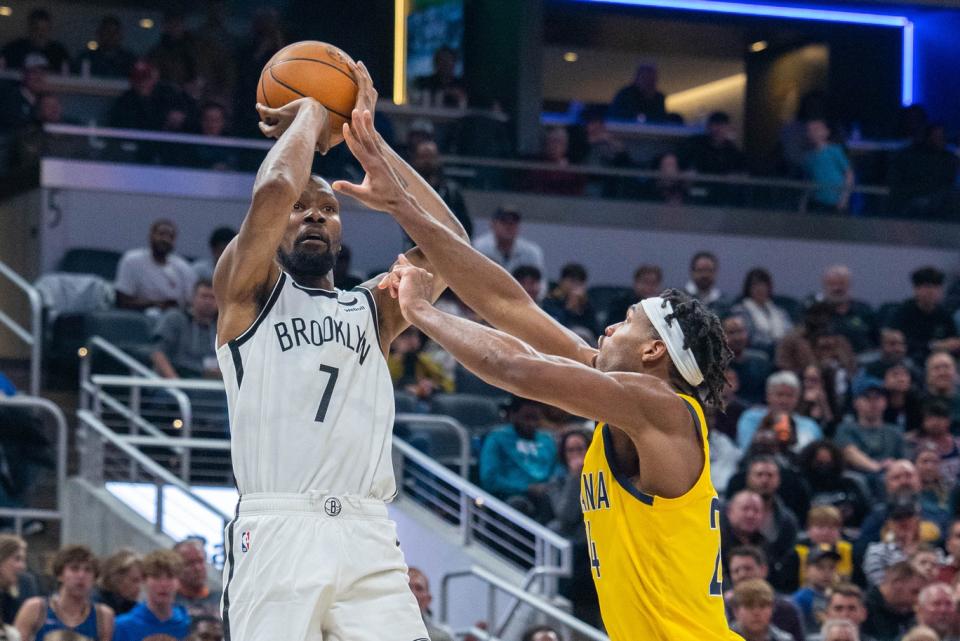
Trevor Ruszkowski-USA TODAY Sports
Seasons overpaid vs. underpaid: 3-12
Real Value: $390,673,906
Career earnings: $314,170,742
Difference: $76,503,164 (24.35 percent)
That Kevin Durant is listed here even though he’s missed one entire season due to injuries tells you all you need to know about how impactful he’s when he’s healthy.
Durant, an all-time great in the sport, though maybe not in fan popularity, has outperformed his contract in 12 of his 15 NBA seasons, per Real Value, with the biggest example of that being in 2009-10, the second-to-last season of his rookie-scale contract, when Durant led the league in scoring at 30.1 points per game while making $4.8 million.
Real Value had Durant’s worth as a player at $26.9 million for a $22.1 million disparity in Real vs. actual value.
Trae Young
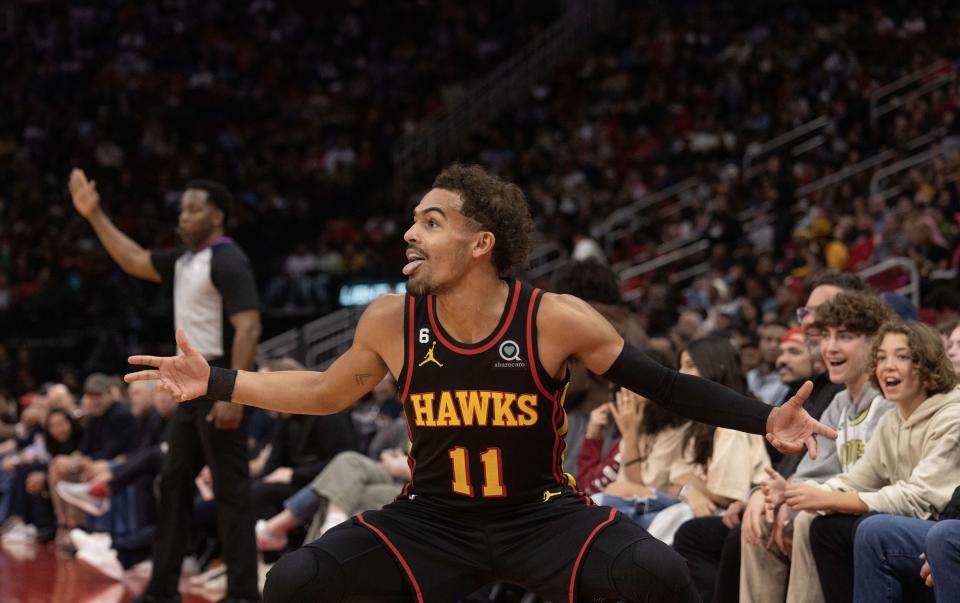
Thomas Shea-USA TODAY Sports
Seasons overpaid vs. underpaid: 0-4
Real Value: $102,941,899
Career earnings: $26,534,551
Difference: $76,407,348 (287.95 percent)
Similar to Doncic, Trae Young has been an All-Star, borderline All-NBA-level guy from his second season on, which, unfortunately for him was during his time on a rookie-scale contract.
Young was most underpaid in 2020-21 when he put up 25.3 points and 9.4 assists while making $6.6 million, $24.4 million less than the $31.0 million Real Value believes he was worth that season.
It shouldn’t come as a surprise that the Hawks were able to reach the Eastern Conference Finals that year, with Young on such a value contract.
Chris Paul
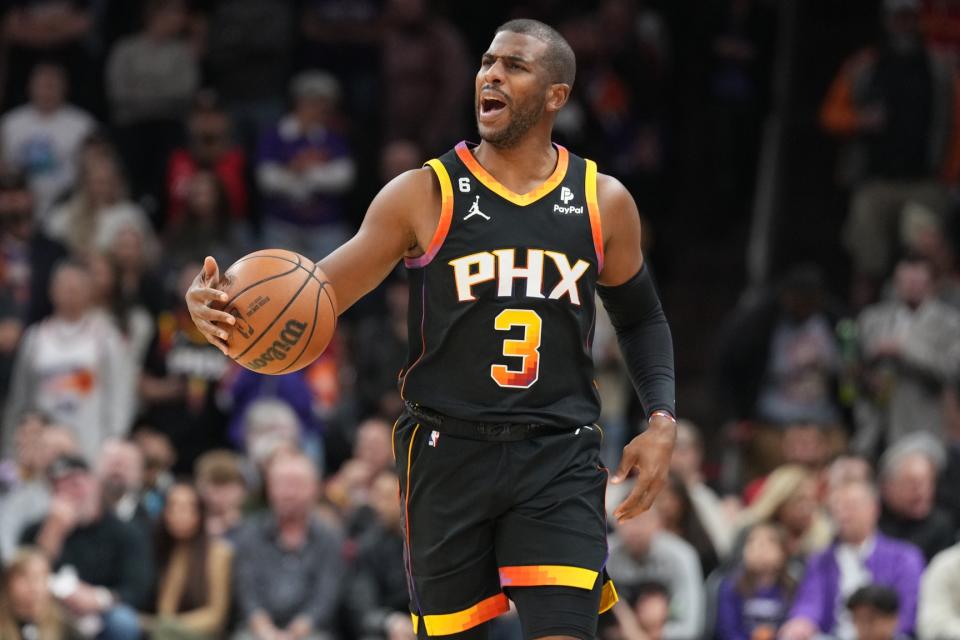
Joe Camporeale-USA TODAY Sports
Seasons overpaid vs. underpaid: 4-13
Real Value: $399,794,637
Career earnings: $330,977,385
Difference: $68,817,252 (20.79 percent)
Younger fans may not remember this but there was a time when Chris Paul wasn’t just the best point guard in the NBA, but also one of the league’s very best players, even nearly beating out Kobe Bryant for MVP in 2007-08, finishing second in the voting that year.
Paul was underpaid multiple times throughout his career, according to Real Value, with the biggest disparities taking place during his time in New Orleans. Paul actually owns two of the five most underpaid seasons ever, per our metric, the most egregious of which being in 2008-09 when he earned $4.6 million during an All-Star, 2nd Team All-NBA season. That season, he put up 22.8 points, 11.0 assists and 2.8 steals, the latter two of which were the highest marks in the league that year, while leading New Orleans to 49 regular-season wins with David West and Peja Stojakovic as his two best teammates.
Real Value valued Paul at $33.0 million that season, creating a $28.4 million disparity, the third largest ever according to our database.
Donovan Mitchell
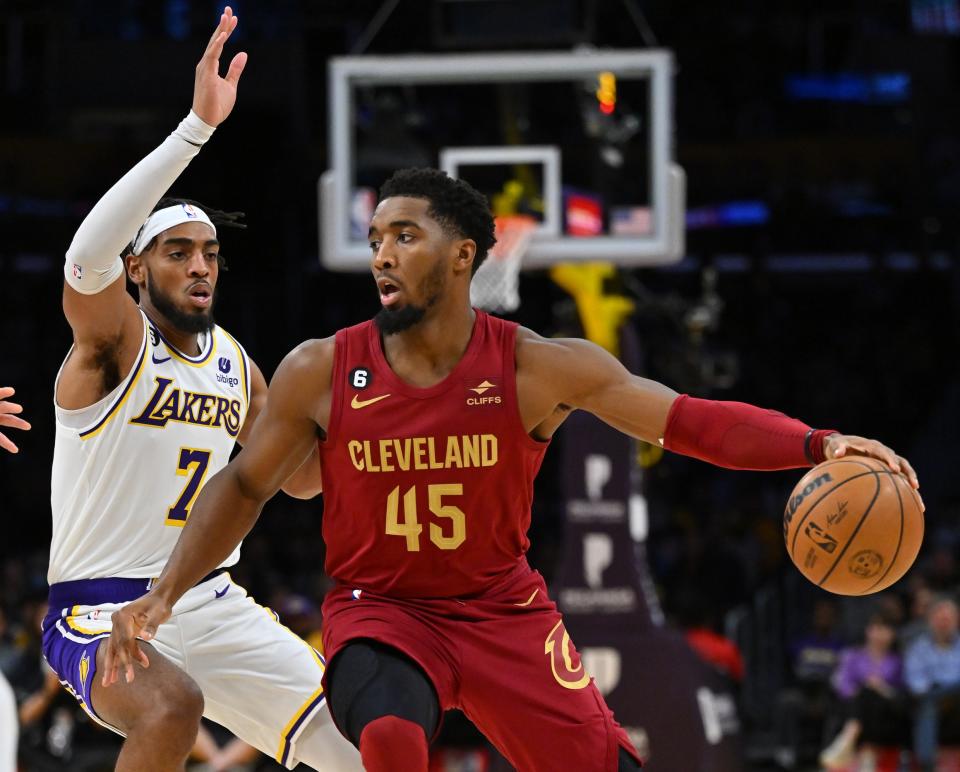
Jayne Kamin-Oncea-USA TODAY Sports
Seasons overpaid vs. underpaid: 1-4
Real Value: $108,193,627
Career earnings: $42,667,521
Difference: $65,526,106 (153.57 percent)
Donovan Mitchell was underpaid in four of his five seasons, according to Real Value, in part due to the fact he wasn’t as high of a draft pick as Doncic or Young, going late in the lottery in his draft year.
In fact, Mitchell owns the 13th-most underpaid season ever, per Real Value, which took place in 2020-21 when the Louisville product earned just $5.2 million during the second All-Star campaign of his career, a year in which he averaged 26.4 points and 5.2 assists while leading the Jazz to a 52-20 regular season.
Real Value had Mitchell slotted at $29.2 million that year for a $24.0 million disparity.
Anthony Davis

Gary A. Vasquez-USA TODAY Sports
Seasons overpaid vs. underpaid: 2-8
Real Value: $254,147,371
Career earnings: $189,720,908
Difference: $64,426,463 (33.96 percent)
As is the case with so many young superstars, the biggest disparities between Anthony Davis’ Real Value vs. actual value came during his rookie-scale contract, with the biggest difference of the bunch occurring in 2014-15, the first 1st Team All-NBA campaign of his career.
That season, Davis made $5.6 million while averaging 24.4 points, 10.2 rebounds and a league-leading 2.9 blocks. Real Value placed Davis’ worth at $27.0 million that year for a $21.3 million difference.
That Davis has so consistently outperformed his contracts despite the constant injury concerns speaks to his unreal greatness as a player.
Isaiah Thomas
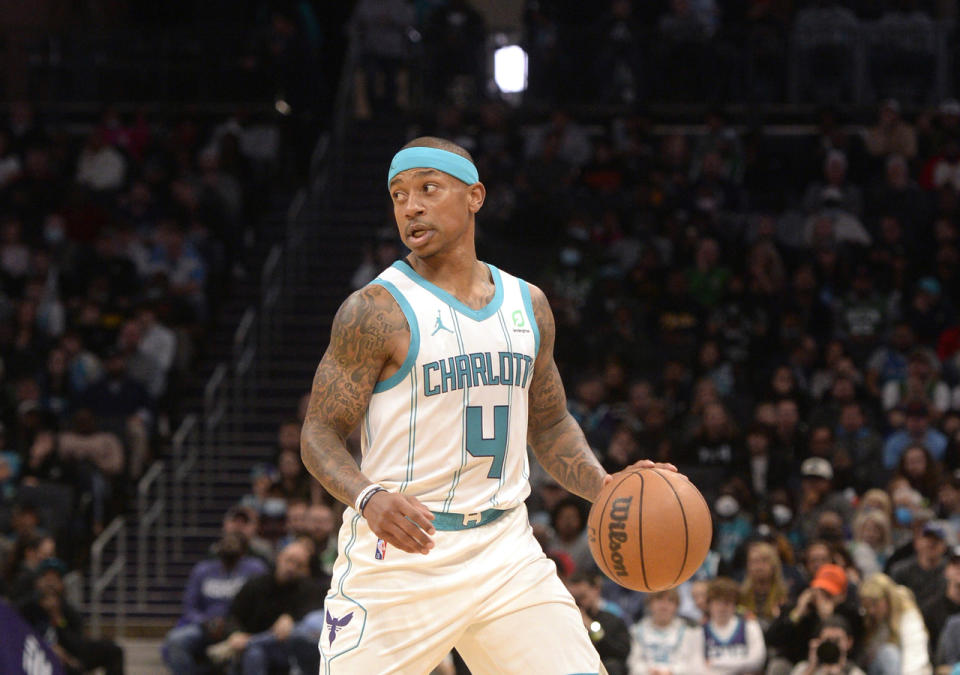
Sam Sharpe-USA TODAY Sports
Seasons overpaid vs. underpaid: 1-9
Real Value: $96,130,712
Career earnings: $32,220,179
Difference: $63,910,533 (198.36 percent)
This one is a bit of a tragic tale, as Isaiah Thomas is the first player on the list who never even made the big bucks that many of his counterparts did, as the undersized but explosive point guard hit free agency one year too late.
Thomas, super unfortunate for him, got injured at the end of his 2nd Team All-NBA season of 2016-17 when he even finished fifth in MVP voting following a spectacular 28.9-point, 5.9-assist regular season. With one year left on his deal, he was traded to the Cavaliers (who traded him to the Lakers after just 15 games), where he was unable to regain his All-Star form. Gunning for a max deal, Thomas instead had to take a minimum deal from the Denver Nuggets in the summer of 2019.
Thomas never regained the form that he had in 2016-17.
Regardless, Real Value valued Thomas at $29.1 million for that 2nd Team All-NBA campaign when he actually earned $6.6 million, the 15th biggest disparity in our database.
Tim Duncan

Harry How/Getty Images
Seasons overpaid vs. underpaid: 6-14
Real Value: $305,344,228
Career earnings: $245,964,351
Difference: $59,379,877 (24.14 percent)
Tim Duncan is remembered as one of the lowest maintenance all-time greats the NBA ever saw, and that wasn’t just on the court but in contract negotiations as well. Duncan even left money on the table during his career to help the San Antonio Spurs build a contender around him, which worked out just fine for both parties.
Duncan’s most underpaid season according to Real Value was in 2002-03 when he made $12.1 million while winning league MVP, Finals MVP, leading the Spurs to a championship and making 1st Team All-NBA.
Real Value believes Duncan was owed $24.7 million that year, a disparity of $12.6 million, not the biggest difference we have ever seen, but one of many disparities in real vs. actual value in Duncan’s career, causing him to rank where he does on this list.
Stephen Curry

Troy Taormina-USA TODAY Sports
Seasons overpaid vs. underpaid: 4-9
Real Value: $315,672,581
Career earnings: $257,859,052
Difference: $57,813,529 (22.42 percent)
Some may not remember it, but due to injury troubles regarding his ankles, Stephen Curry didn’t hit full flamethrowing MVP level until later on in his career, leading to him agreeing to an unimpressive, four-year, $44 million extension in October of 2012, one that would go on to change the landscape of the NBA.
That bargain of an extension allowed the Warriors to build a juggernaut at levels previously unseen in the NBA, so at least Golden State smartly took advantage of the favorable situation it found itself in.
In Curry’s first MVP season of 2014-15, he averaged 23.8 points and 7.7 assists while leading the Warriors to a 67-15 campaign and making just $9.9 million.
It was the year after, however, that Real Value deems as the most underpaid of Curry’s career. That season, another MVP campaign for the legendary point guard, Curry made $11.4 million while leading the league in scoring (30.1 points) and steals (2.1), and shooting 45.4 percent on over 11 nightly three-point attempts.
Real Value puts Curry’s worth that season, 2015-16, at $36.8 million for a $25.4 million difference, the eighth-largest ever in our Real Value database.
Dirk Nowitzki

Jerome Miron-USA TODAY Sports
Seasons overpaid vs. underpaid: 6-15
Real Value: $311,800,526
Career earnings: $255,371,800
Difference: $56,428,726 (22.10 percent)
In the mold of a Duncan, Dirk Nowitzki was one of the best power forwards of all time and one of the most loyal superstars the NBA has ever seen. He may have been too loyal, though, as the Mavericks didn’t do things nearly as well as the Spurs, though Nowitzki was still able to lead the franchise to a championship.
Nowitzki’s most underpaid season came well before that, however, in 2001-02 when he was paid just $2.2 million. That year, the all-time great was 2nd Team All-NBA, an All-Star and averaged 23.4 points and 9.9 rebounds while shooting almost 40.0 percent from three, a nearly unheard-of figure for a big man at the time.
Real Value had Nowitzki’s worth at $17.2 million that year for a $15.1 million disparity.
Chauncey Billups
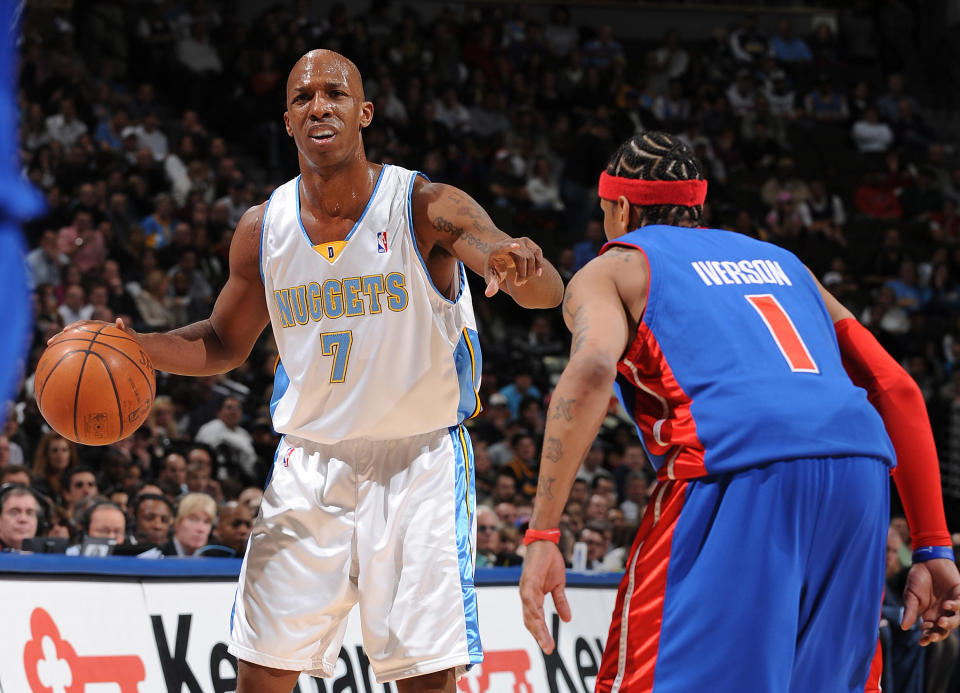
Garrett W. Ellwood/NBAE via Getty Images
Seasons overpaid vs. underpaid: 5-12
Real Value: $161,207,188
Career earnings: $106,227,720
Difference: $54,979,468 (51.76 percent)
It’s common knowledge that it took a long time for Chauncey Billups to establish himself in the NBA but once he did, he was a hugely valuable and impactful point guard. Unfortunately for him, Billups only started making star-level money late in his career.
According to Real Value, Billups was most underpaid in 2005-06 when he made $5.9 million while averaging 18.5 points and 8.6 assists and leading the Pistons to the Eastern Conference Finals. Real Value had Billups worth $20.0 million that season for a huge $14.1 million disparity.
Allen Iverson
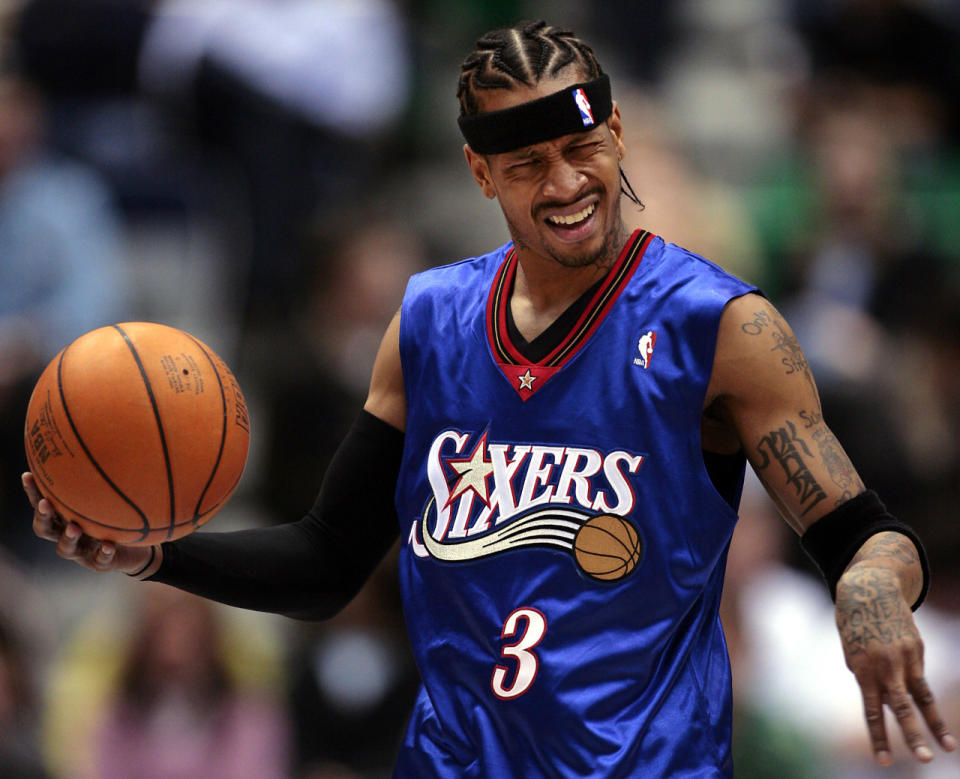
AP Photo/Steve C. Wilson
Seasons overpaid vs. underpaid: 2-12
Real Value: $207,455,634
Career earnings: $154,494,445
Difference: $52,961,189 (34.28 percent)
If we factored in the impact he had on the Sixers’ bottom line, Allen Iverson would rank even higher as he was one of the biggest draws in sports during his heyday, a must-watch product on the court and an impactful figure in American pop culture.
Unsurprisingly, 2000-01 is the year that saw the largest difference in Real Value vs. actual value of Iverson’s career, an MVP campaign for the legendary floor general in which he lead Philadelphia all the way to the NBA Finals with a very weak roster around him.
That season, Iverson earned $10.1 million while Real Value believed he was worth $20.5 million, an enormous figure at the time, for a $10.4 million disparity.
DeMarcus Cousins
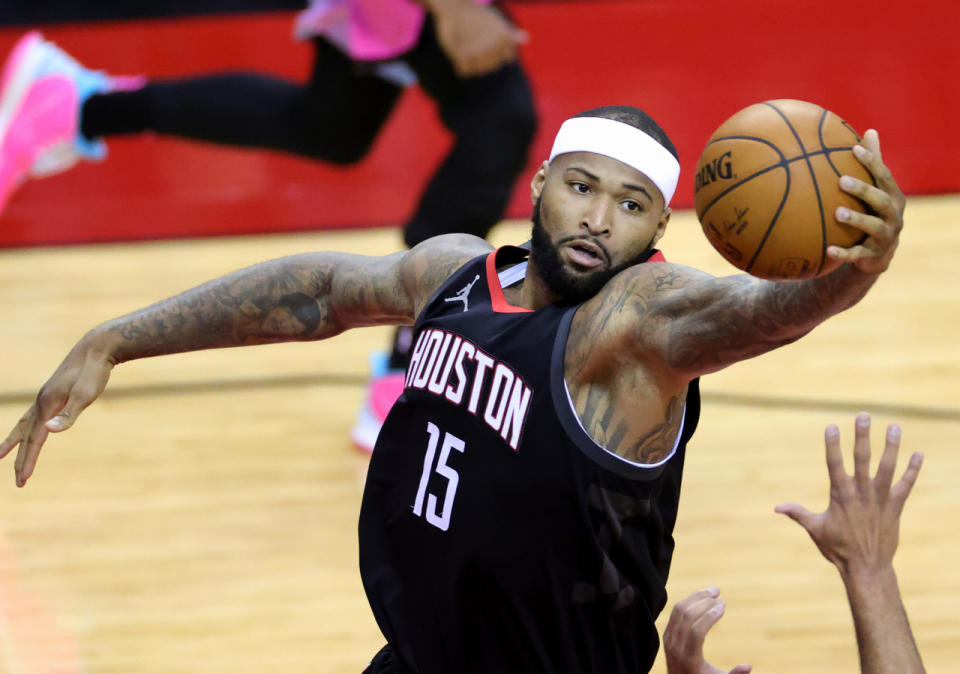
Carmen Mandato/Pool Photos-USA TODAY Sports
Seasons overpaid vs. underpaid: 1-11
Real Value: $143,787,834
Career earnings: $91,978,289
Difference: $51,809,545 (56.33 percent)
If you’re surprised to see him here, we were, too, though in hindsight it makes perfect sense. DeMarcus Cousins outperformed his rookie-scale contract and lived up to his first big contract but unfortunately suffered a major injury on the last season of that big contract, right ahead of free agency.
As such, Cousins went from almost certainly landing his second max contract to playing for $5.3 million with the Golden State Warriors.
Cousins is like many of the other young stars of his era, seeing his biggest disparity in Real Value vs. actual value while on his rookie deal. In Cousins’ case, that came in 2013-14 when he was making $5.0 million while putting up 22.7 points and 11.7 rebounds, a campaign in which Real Value had him at $14.8 million, roughly a $9.9 million difference.
Karl Malone
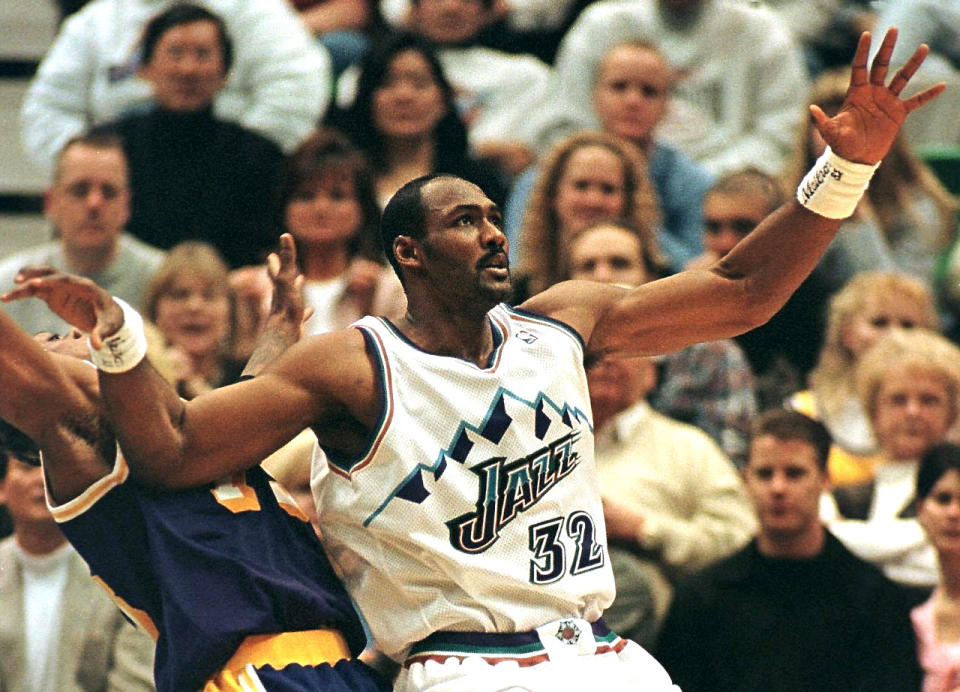
GEORGE FREY/AFP via Getty Images
Seasons overpaid vs. underpaid: 2-12
Real Value: $152,632,429
Career earnings: $101,723,378
Difference: $50,909,051 (50.05 percent)
Since we only keep salary data from 1990 onward, this exercise doesn’t capture players who may have been underpaid before that, as Karl Malone almost certainly was, making a bunch of All-Star appearances in the ’80s while not earning much money.
Still, Malone pops up in this exercise. The biggest disparity in his career came in 1997-98, the year after his first MVP award and before his second, when he was earning $5.1 million while putting up 27.0 points and 10.3 rebounds and leading the Utah Jazz to their second straight Finals appearance.
Real Value had his worth in ’97-98 at $14.5 million, a huge number at the time, for a $9.4 million difference.
Shai Gilgeous-Alexander
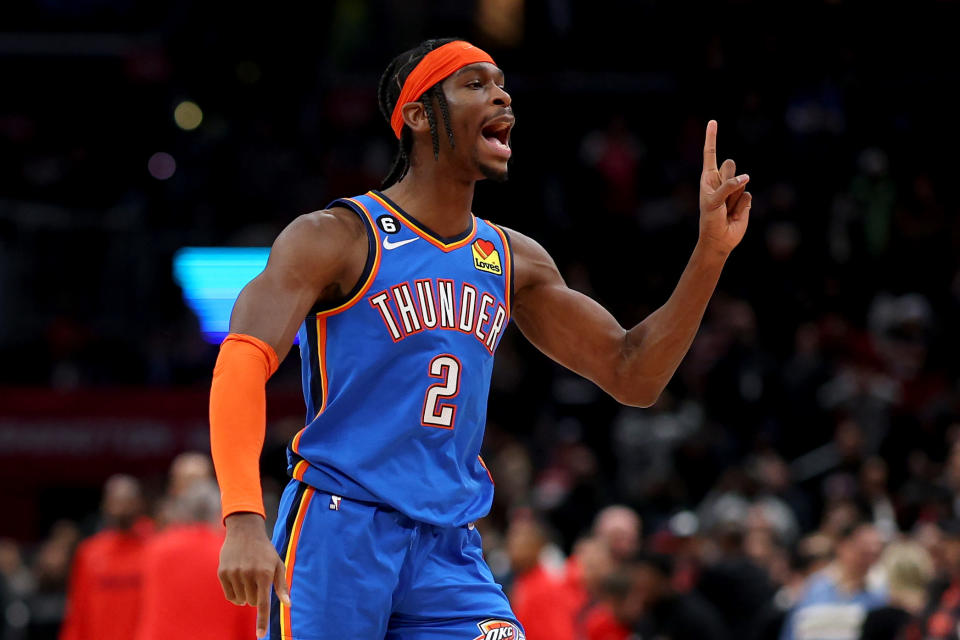
Rob Carr/Getty Images
Seasons overpaid vs. underpaid: 0-4
Real Value: $66,851,176
Career earnings: $16,965,132
Difference: $49,886,044 (294.05 percent)
The jury is still somewhat out there, but it looks like the Oklahoma City Thunder have an all-time heist on their hands in the trade that sent Paul George to the Los Angeles Clippers, as not only did Oklahoma City get a treasure trove of assets in the exchange, they also got Shai Gilgeous-Alexander, a superstar in the making.
The Canadian lead guard’s max extension kicked in this year so he’s no longer as outrageously underpaid, but in 2020-21, Gilgeous-Alexander’s Real Value vs. actual value difference was huge as he made $4.1 million while averaging 23.7 points and 5.9 assists. Real Value had Gilgeous-Alexander’s worth at $23.9 million that year for a monstrous difference of $19.7 million.
Steve Nash

AP Photo/Matt York
Seasons overpaid vs. underpaid: 5-14
Real Value: $195,301,969
Career earnings: $146,936,620
Difference: $48,365,349 (32.92 percent)
The Mavericks opted not to throw big bucks at Steve Nash to keep him despite his two All-Star appearances while with the team, a decision they would go on to regret.
Had Cuban and Co. decided to pay Nash what he felt he was worth in free agency, they would have had a hugely valuable contract on their hands, as Nash would go win the next two MVP awards in his first two years with the Phoenix Suns.
Real Value actually believes Nash’s most valuable campaign came after that, however, in 2006-07 when the point guard would average 18.6 points and 11.6 assists while shooting 45.5 percent from three. Nash earned $10.5 million that year while Real Value had him at $19.7 million for a $9.2 million difference.
Nash held a hugely valuable contract throughout the majority of his career, never ranking higher than 33rd league-wide in salary, which came in 2009-10, his 14th season.
Sam Cassell

Elsa/Getty Images
Seasons overpaid vs. underpaid: 3-13
Real Value: $104,066,449
Career earnings: $58,419,775
Difference: $45,646,674 (78.14 percent)
Sam Cassell is unique in this exercise, as not only was he a late bloomer in the NBA, but his most underpaid season didn’t come until his 11th NBA campaign, surprisingly not while he was on a rookie-scale contract.
In 2003-04, the first and only All-Star year on Cassell’s resume, the former Florida State star averaged 19.8 points and 7.3 assists while making $5.1 million, when Real Value had him at $14.3 million for a $9.2 million difference.
Cassell’s value contract that year was a big reason why the Timberwolves were able to make a run to the Western Conference Finals.
Jayson Tatum
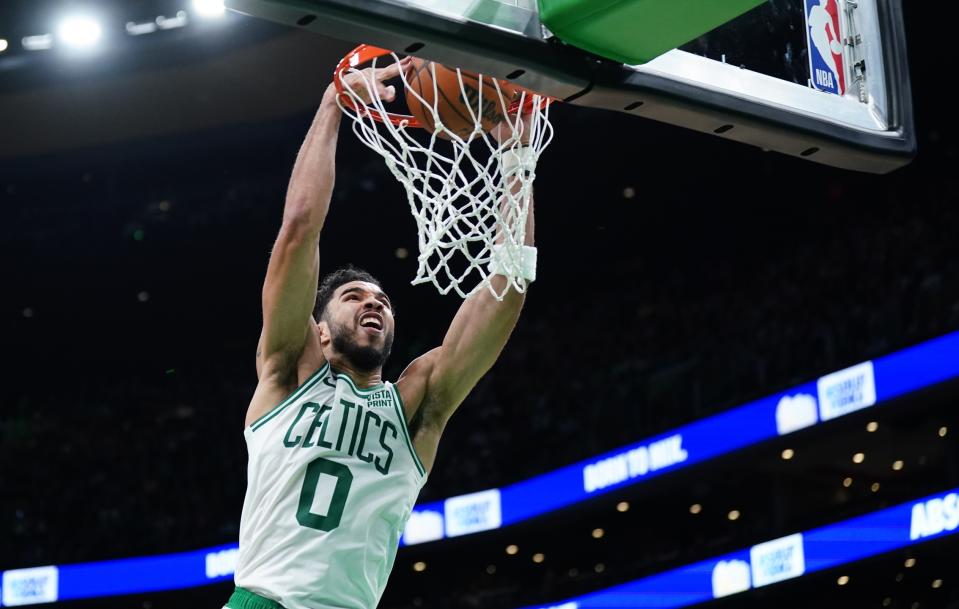
David Butler II-USA TODAY Sports
Seasons overpaid vs. underpaid: 0-5
Real Value: $103,621,814
Career earnings: $58,176,820
Difference: $45,444,994 (78.12 percent)
By Year 3, Jayson Tatum was already an All-Star who had led the Boston Celtics on multiple deep playoff runs.
It was in that third season of 2019-20, the first All-Star nomination of his career, that Tatum was truly underpaid, making just $7.8 million in a year in which he averaged 23.4 points and 7.0 rebounds. Real Value believes he should have made $26.5 million that year, $18.6 million more than he was actually paid.
At least the Celtics were able to use the value of that contract to reach the Eastern Conference Finals.
Damian Lillard
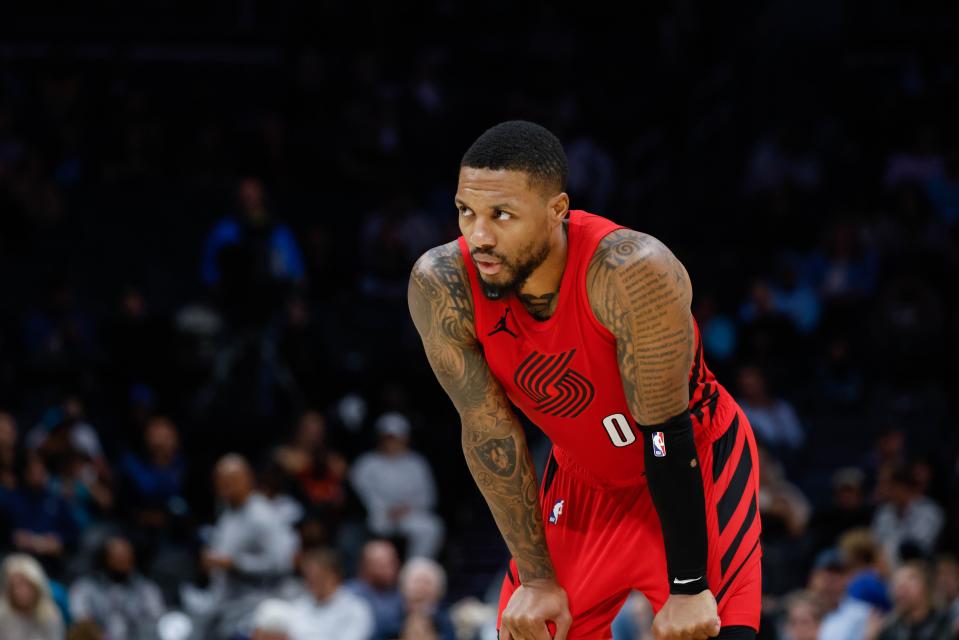
Nell Redmond-USA TODAY Sports
Seasons overpaid vs. underpaid: 1-9
Real Value: $236,296,343
Career earnings: $193,078,511
Difference: $43,217,832 (22.38 percent)
It didn’t take Damian Lillard long to find his way in the NBA, averaging nearly 20 points right off the bat as a rookie. However, it wasn’t until his fourth season that he became a true superstar while still on his rookie-scale deal.
That season, 2015-16, Lillard put up 25.1 points and 6.8 assists while making $4.2 million on a year that Real Value valued him at $19.2 million for a difference of roughly $15.0 million.
At least Lillard was more fairly compensated by the very next season when he made $24.3 million.
Karl-Anthony Towns

Matt Krohn-USA TODAY Sports
Seasons overpaid vs. underpaid: 3-4
Real Value: $156,743,801
Career earnings: $114,123,435
Difference: $42,620,366 (37.35 percent)
One of the best floor-spacing, high-level scoring big men of his era, Karl-Anthony Towns was excellent right away as an NBA player, greatly outplaying his contract right off the bat.
In 2016-17, Towns’ second season in the league, the Kentucky Wildcat averaged 25.1 points and 12.3 rebounds while shooting 54.2 percent from the floor. He made $6.0 million that season while his Real Value was $24.1 million, closer to a max contract at the time and a difference of $18.1 million.
Louis Williams
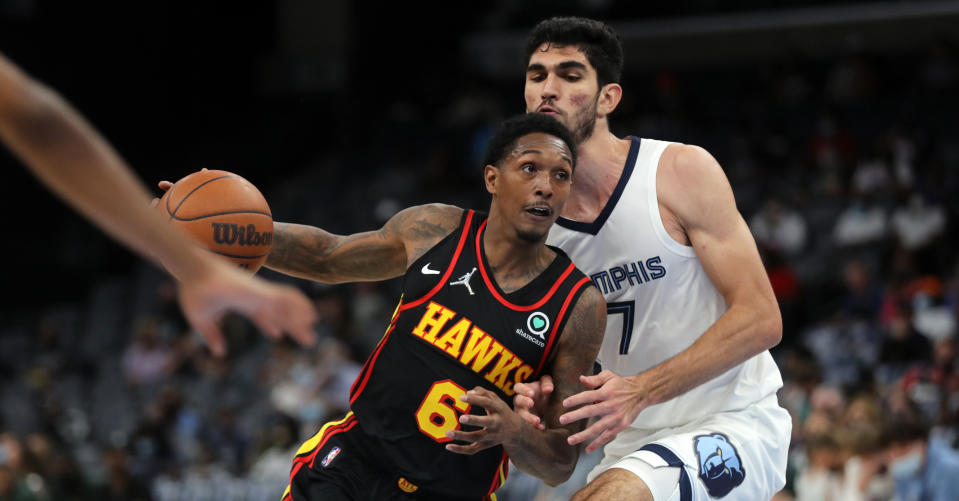
Petre Thomas-USA TODAY Sports
Seasons overpaid vs. underpaid: 5-12
Real Value: $128,443,634
Career earnings: $87,208,319
Difference: $41,235,315 (47.28 percent)
This one probably doesn’t come as a surprise, as Lou Williams was often discussed as an underpaid player throughout his NBA career, with his highest salary ever coming from 2018-19 through 2020-21, when he earned merely $8.0 million per year.
The biggest disparity of real vs. actual value of Williams’ career came before that actually, in 2017-18 when he put up 22.6 points and 5.3 assists while making $7.0 million, a year where Real Value deemed his output worth $17.8 million, a $10.8 million difference.
Jimmy Butler
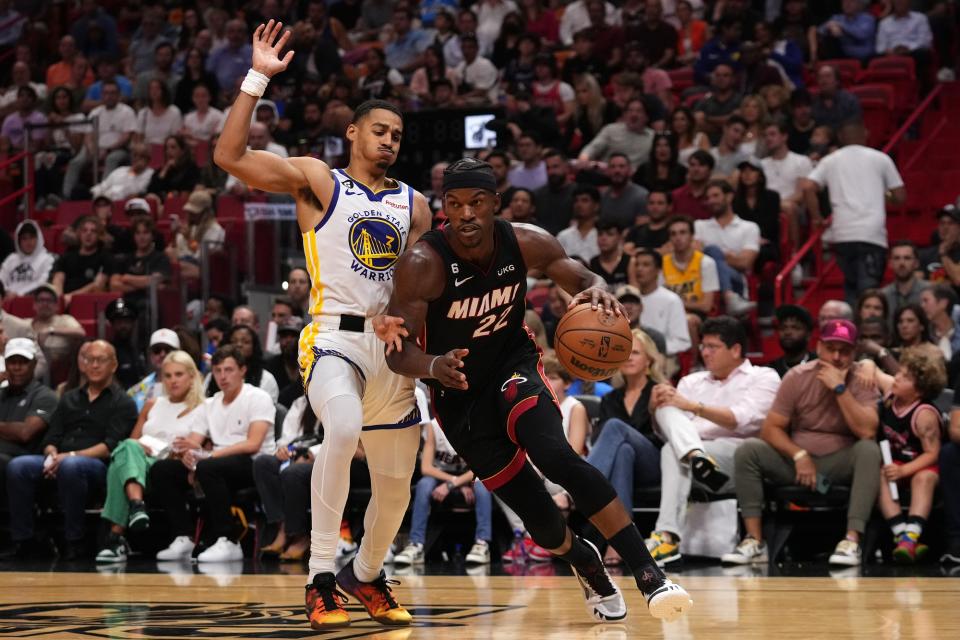
Jasen Vinlove-USA TODAY Sports
Seasons overpaid vs. underpaid: 5-6
Real Value: $221,219,372
Career earnings: $181,047,328
Difference: $40,172,044 (22.19 percent)
One of the NBA’s current top two-way stars, Jimmy Butler takes his game to an even higher level come playoff time, when he often performs like a superstar, on a plane above his regular-season contributions. Butler is lacking as a three-point shooter, but his midrange and drive-and-score game are both deadly, while his rebounding and playmaking are underappreciated.
As such, although he is currently on a max contract, our Real Value metric believes he has been underpaid for six of his NBA seasons so far.
Butler is yet another case of a star-level on a rookie-scale deal getting hurt by the system, as in 2014-15, the final year of the former Marquette standout’s rookie contract, Butler averaged 20.0 points, 5.8 rebounds and 1.8 steals while earning $2.1 million. His Real Value in that campaign was $18.6 million for a $16.5 million difference.
Darren Collison
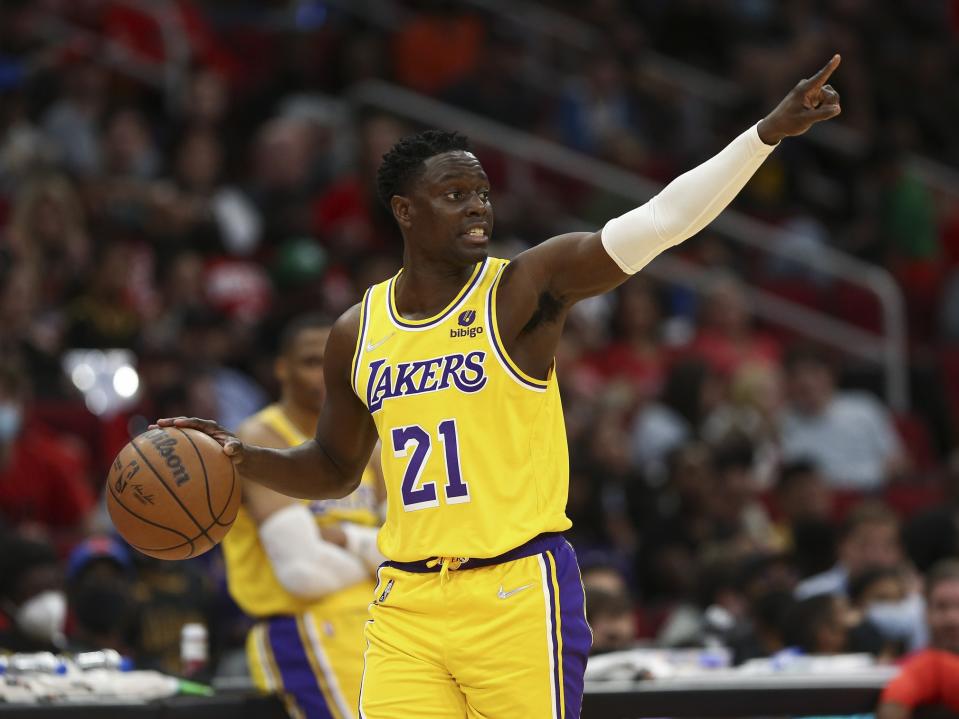
Troy Taormina-USA TODAY Sports
Seasons overpaid vs. underpaid: 0-11
Real Value: $82,079,803
Career earnings: $43,494,962
Difference: $38,584,841 (88.71 percent)
Darren Collison shocked many when he retired from the NBA in the midst of his prime, only to attempt a comeback years later, one that hasn’t been successful to this point. When he retired, Collison was one of the better point guards in the NBA, a reliable ballhandler and table-setter on offense with elite shooting abilities from beyond the arc, to go with his pest-like defending.
Collison’s impact often outweighed his numbers, too, which our Real Value metric seems to agree with.
The biggest disparity in Real Value of Collison’s career came in 2010-11 when he put up 13.2 points and 5.1 assists as a second-year player while making $1.4 million. Collison’s Real Value that year was $6.9 million for a $5.5 million difference.
Andre Miller
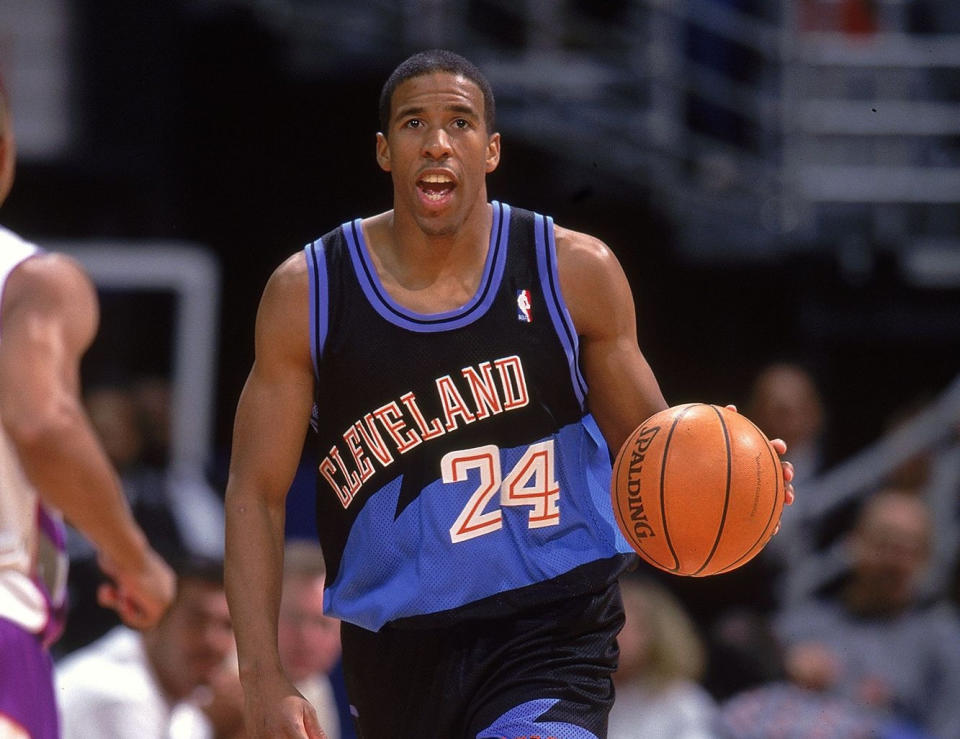
Harry How /Allsport
Seasons overpaid vs. underpaid: 3-14
Real Value: $136,060,208
Career earnings: $97,709,070
Difference: $38,351,138 (39.25 percent)
Andre Miller enjoyed strong longevity as a good point guard in the NBA, spending 17 seasons in the best basketball league in the world, 11 as a full-time starter.
Miller lasted that long even as a borderline non-threat from beyond the arc, using pace, ballhandling and solid finishing down low to score and create from his lead-guard spot.
In 2001-02, Miller – still on his rookie contract at that point – averaged 16.5 points and a league-leading 10.9 assists while earning $1.9 million. Real Value believed he was worth $12.7 million, a difference of $10.8 million, the biggest disparity of his career. Although that isn’t as big of a difference as most others on this list, Miller’s longevity – being so good and so underpaid for so long – is how he found his way on this list.
Domantas Sabonis
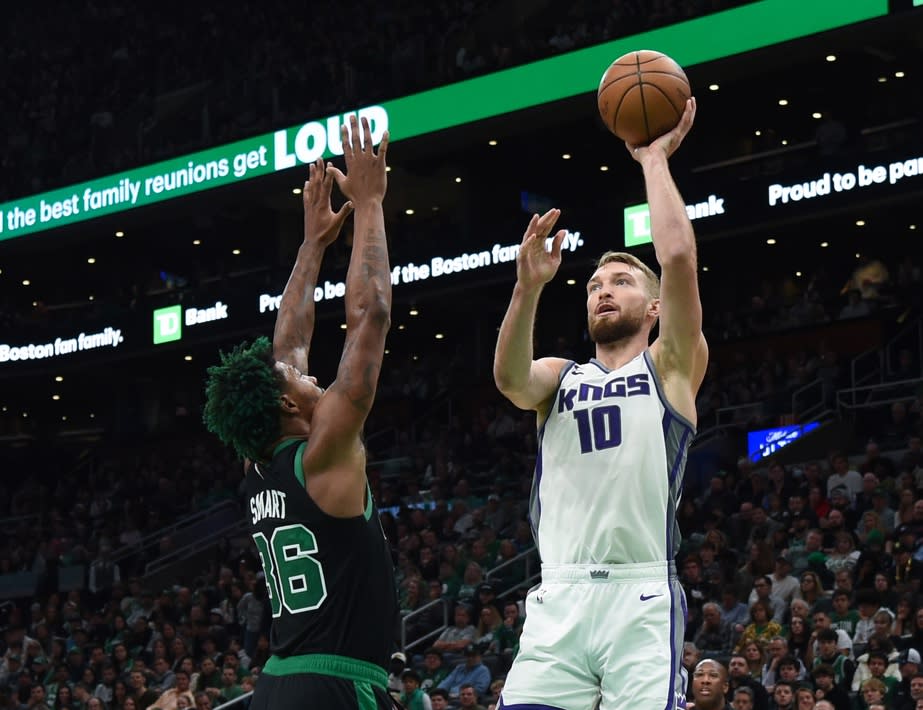
Bob DeChiara-USA TODAY Sports
Seasons overpaid vs. underpaid: 2-4
Real Value: $87,457,609
Career earnings: $49,479,554
Difference: $37,978,055 (76.76 percent)
There’s often a divide between the advanced analytics and the raw statistics when it comes to Domantas Sabonis, with the former not thinking too highly of him and the latter deeming him an All-Star-level big man. The truth probably lies closer to the latter, with Sabonis providing his teams with scoring, rebounding and playmaking at his 4/5 spot, three combined attributes that don’t often come from a big man.
Sabonis, if nothing else, has always been quite productive since hitting his prime in the NBA, and though his lack of defending and three-point shooting somewhat limit his impact, our metric believes he’s been good enough to be deemed underpaid throughout his career.
His most underpaid season came in 2019-20, the final year of his rookie-scale deal when he earned $3.5 million in a campaign that Real Value believed he was worth $23.5 million, a difference of nearly $20.0 million.

